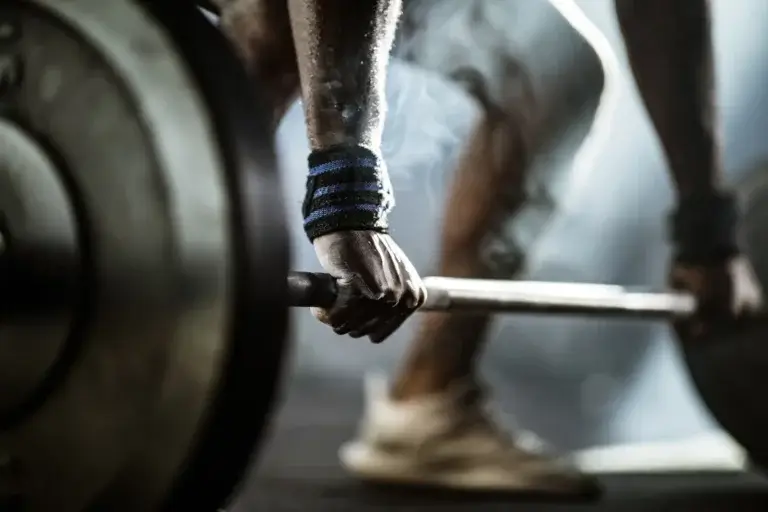
Strength
Testosterone And Its Role In Building Muscle Mass
Testosterone is vital for building and maintaining muscle mass. It is produced in the testicles of men and ovaries of women, although men tend to produce more of it. In this article, we will explore the connection between testosterone and muscle growth, the factors affecting testosterone production, and the signs of low testosterone levels.
4 mins read
Published on
June 6, 2023
Written by
EDGE
Share this article
WHAT IS TESTOSTERONE?
Testosterone is a male sex hormone that belongs to the class of androgens (sex hormones). It is produced in the Leydig cells of the testicles and adrenal glands. Women also produce testosterone, although in lesser amounts, in their ovaries and adrenal glands.
Testosterone is not only important for sexual development but also plays a vital role in overall health. It is responsible for maintaining bone density, muscle mass, and red blood cell production.
HOW IS TESTOSTERONE PRODUCED?
Testosterone production in men is stimulated by luteinizing hormone (LH) and follicle-stimulating hormone (FSH) released by the pituitary gland. These hormones signal the Leydig cells to produce testosterone. In women, testosterone is produced by the ovaries and adrenal glands in response to LH and FSH released during ovulation and menstruation.
In men, testosterone production is at its peak during adolescence and early adulthood. After the age of 30, testosterone levels start to decline gradually. However, the rate of decline varies from person to person. Some men experience a more significant decrease in testosterone levels than others.
You can check your testosterone levels at home with our range of blood tests. Our advanced testosterone blood test checks 12 biomarkers, giving you an in-depth look at your hormone health, helping you to optimise your health and training.
TESTOSTERONE’S IMPACT ON MUSCLE MASS
Testosterone plays a critical role in protein synthesis, which is the process by which the body builds muscle tissue. It does this by stimulating muscle cells to produce more protein, which promotes muscle growth and repair. This is why testosterone is often referred to as an anabolic hormone.
Studies have shown that testosterone levels are positively correlated with muscle protein synthesis[1]. In other words, the higher your testosterone levels, the more muscle you can build.
Testosterone also increases the number of receptors on muscle cells that bind to other anabolic hormones, such as insulin-like growth factor 1 (IGF-1)[2]. This further enhances the muscle-building effects of testosterone.
TESTOSTERONE AND MUSCLE FIBRE
Testosterone also affects the type of muscle fibres in the body. There are two types of muscle fibres: slow-twitch (Type 1) and fast-twitch (Type 2).
Slow-twitch fibres are better for endurance exercise, as they are more resistant to fatigue. Fast-twitch fibres, on the other hand, are better for explosive movements and weightlifting, as they generate more force.
Testosterone levels are positively correlated with the number of fast-twitch muscle fibres in the body. This means that higher testosterone levels are associated with greater muscle growth (hypertrophy).
TESTOSTERONE’S ROLE IN MUSCLE RECOVERY
Testosterone also plays a vital role in muscle recovery. It reduces muscle damage and inflammation following intense exercise, which promotes faster recovery and prevents muscle breakdown.
Higher testosterone levels are also associated with increased energy and endurance during workouts. This means that individuals with higher testosterone levels are able to train harder and longer, which can lead to greater gains in muscle mass and strength.
It’s important to note that while testosterone is an important factor in muscle growth and development, it is not the only factor. Proper nutrition, adequate rest, and a well-designed training programme are also essential for achieving optimal results.
AGE AND TESTOSTERONE PRODUCTION
Testosterone levels in men start to decline naturally after the age of 30. This decline continues over time, resulting in reduced muscle mass, bone density, and sex drive. In women, testosterone levels decrease after menopause. However, it’s important to note that age-related declines in testosterone levels can be influenced by other factors such as obesity, chronic illness, and medication use.
It’s also worth noting that testosterone levels can vary widely among individuals of the same age group. Some men and women may have naturally higher levels of testosterone than others.
THE IMPACT OF DIET ON TESTOSTERONE
What you eat can impact testosterone production. Foods rich in protein, healthy fats, and zinc can increase testosterone levels. For example, red meat, poultry, fish, and eggs are all good sources of protein. Nuts, seeds, and olive oil are good sources of healthy fats. Oysters and shellfish are good sources of zinc.
On the other hand, a diet high in sugar and processed foods can lead to insulin resistance, which can inhibit testosterone production.
EXERCISE AND TESTOSTERONE LEVELS
Regular exercise, especially strength training, can help increase testosterone levels by stimulating the Leydig cells in the testicles to produce more testosterone[3]. High-intensity interval training (HIIT) has been shown to be particularly effective in boosting testosterone levels. HIIT involves short bursts of intense exercise followed by periods of rest or low-intensity exercise.
Endurance training, which involves sustained aerobic activity such as running or cycling, can help improve cardiovascular health and reduce body fat, both of which can help increase testosterone levels. Yoga, on the other hand, may help reduce stress and improve mood, both of which can have a positive impact on testosterone production.
PHYSICAL SYMPTOMS OF LOW TESTOSTERONE
In men, low testosterone levels can cause a range of physical symptoms, including decreased muscle mass, strength, and bone density[4]. This can make it harder to perform everyday activities and lead to a loss of confidence. In addition, men may notice an increase in body fat, particularly around the midsection.
Women with low testosterone levels may experience decreased muscle mass, fatigue, and lower libido. They may also notice changes in their menstrual cycle and an increase in body fat.
Low testosterone levels can also lead to increased muscle breakdown and decreased energy levels, making it harder to push through tough workouts.
If you’re struggling to see results at the gym despite your best efforts, low testosterone levels could be to blame.
Blood test for
Weightlifters
Male & Female Tests
sports doctor review
Results in 2 working days
Flexible subscription
Medically Reviewed

This article has been reviewed by our medical expert
Our expert Dr Thom Phillips works in NHS general practice and has a decade of experience working in both male and female elite sport. He has a background in exercise physiology and has published research into fatigue biomarkers.

